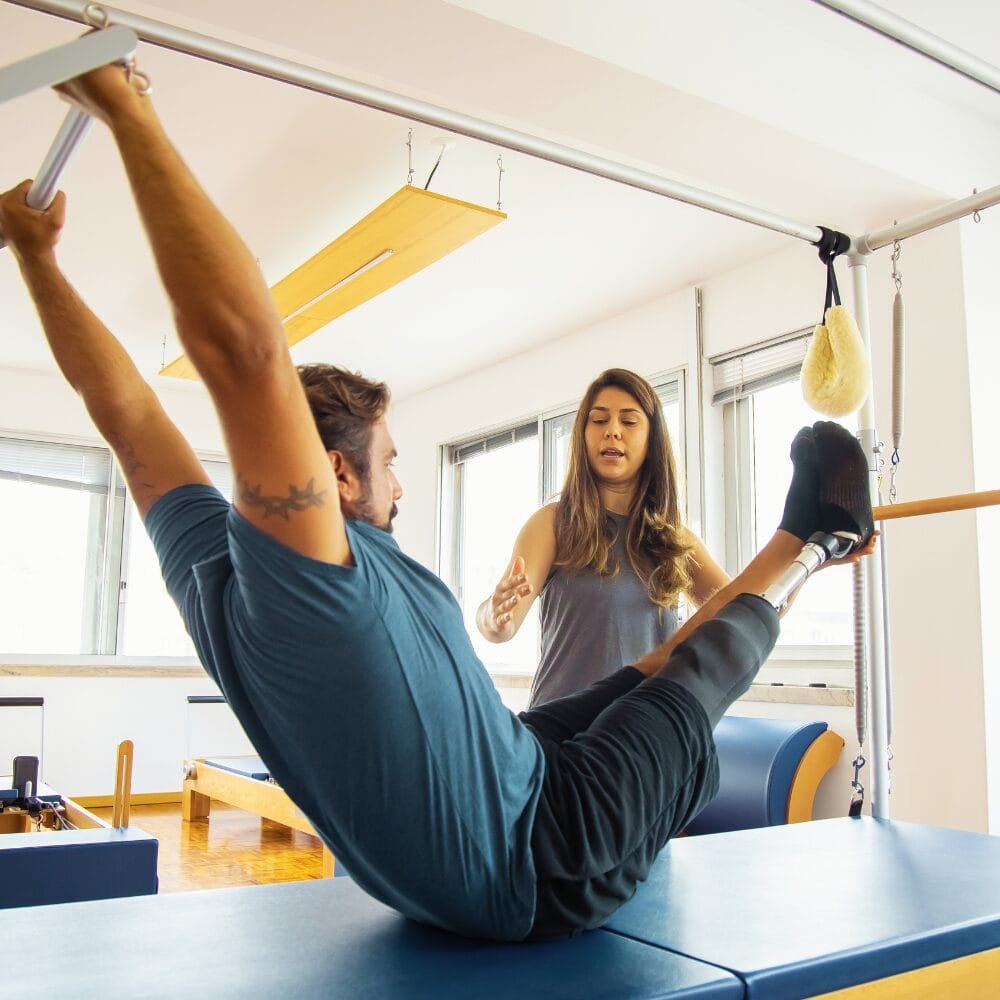Expert Knowledge vs. Client Understanding: Bridging the Gap in Posture Education
- Updated - March 3, 2025
As practitioners, we spend years developing a deep understanding of posture, movement, and body mechanics. We analyze joint positioning, muscle function, and biomechanical patterns with precision. But when it comes to educating clients, this expert knowledge doesn’t always translate as we expect.
Of course, most—if not all—practitioners already have the skill of adapting their communication to different clients. After all, working with people means explaining complex ideas in ways they can understand. However, even the best communicators sometimes face challenges when bridging the gap between professional expertise and client comprehension, especially when personal experience, symptoms, and common misconceptions shape a client’s understanding.
Clients aren’t interested in biomechanics for its own sake—they want answers to their immediate concerns:
- Why does my neck hurt?
- What can I do about my bad posture?
- How do I stop slouching?
If our goal is to educate, engage, and empower clients, we need to bridge the gap between what we know and how they understand it.
The Practitioner's Perspective: Expert Knowledge

Health professionals view posture through a detailed, analytical lens. Our thinking is influenced by education, clinical experience, and years of assessing movement patterns.
When we explain postural issues, we often:
1. Think in Causes Rather Than Symptoms
We understand that posture-related issues develop over time due to movement patterns, muscle imbalances, and lifestyle factors. So, we tend to focus on why the issue is happening.
However, clients are usually more focused on the symptoms – the discomfort they feel right now. They may not care about the biomechanics of the scapulothoracic rhythm if they just want to know why their shoulders ache at the end of the day.
Example:
- Practitioner’s logic: “Your scapular stability is compromised due to weak lower traps and overactive upper traps.”
- Client’s logic: “Why do my neck and shoulder always feel tight?”
Bridging the gap may mean starting with their symptom and gradually connecting it to the deeper cause.
2. Use Technical Language That Clients Don't Recognize
Terms like “pelvic tilt,” “neuromuscular adaptation,” or “thoracic mobility” are common in professional circles, but they may not resonate with clients.
Instead of assuming they’ll understand, we must change it into everyday language and relate it to something tangible.
Example:
- Instead of: “You have excessive lumbar lordosis, leading to an anterior shift in your center of mass.”
- Try: “Your lower back arches too much, and your weight is being pulled forward, which can cause strain and discomfort.”
Even minor tweaks in wording can significantly affect how a client absorbs the information.
Discover a practitioner near you.
Looking for a practitioner near you? Our extensive network of qualified professionals is here to help you.
3. Prioritize Completeness Over Simplicity
As experts, we want to give clients a complete picture. We might explain how poor posture affects the kinetic chain, leading to compensations in the hips, knees, and ankles. While that’s true, it can overwhelm someone wanting to know how to stop their back from hurting.
Instead of overloading clients with too much detail at once, start simple and introduce more complexity only when necessary.
4. Assume a Shared Knowledge Base
Because we live and breathe posture, it’s easy to assume that clients have a basic understanding of body mechanics. But what seems obvious to us (how posture affects breathing, why core stability matters) may be entirely new for them.
It’s important to check for understanding and be prepared to clarify concepts in multiple ways.
The Key Takeaway:
While expert knowledge is essential in professional settings, it can become a barrier if we don’t translate it effectively for clients.
The Client's Perspective: Understanding Through Experience

Clients process information differently than practitioners. Their day-to-day experiences, pain levels, and personal beliefs shape their understanding.
Here’s how they typically approach posture education:
1. They Prioritize Symptoms and Solutions
Clients rarely think about posture as a long-term issue. They usually seek information because of immediate discomfort or aesthetic concerns.
- Practitioner’s perspective: “Postural alignment affects musculoskeletal efficiency and joint health.”
- Client’s perspective: “My back hurts when I sit for too long.”
While we might want to emphasize prevention and long-term benefits, clients will engage more if we start with solutions that address their current symptoms.
2. They Think in Practical, Everyday Terms
Clients don’t think in terms of biomechanics—they think in terms of habits.
For example, rather than saying, “You have excessive thoracic kyphosis, leading to forward head posture,”
explain it: “Hunching over your phone or laptop all day is causing your head to drift forward, which strains your neck and shoulders.”
3. They Need Clear and Actionable Advice
Clients aren’t looking for an academic lecture. They want to know what to do about their posture.
Instead of diving into anatomical explanations, lead with practical solutions:
- “Try standing up every 30 minutes to reset your posture.”
- “Use a pillow behind your lower back when sitting to help maintain a more neutral spine.”
If they experience relief, they’ll be more open to learning the why behind it.
4. They Bring Their Own Biases and Beliefs
Clients may already have misconceptions about posture. Some common ones include:
- “Good posture means standing perfectly straight all the time.”
- “Back pain is just part of aging.”
- “A strong core means doing lots of crunches.”
If we don’t acknowledge these beliefs, clients may dismiss valuable advice that contradicts what they think they know.
The Key Takeaway:
To effectively educate clients, we need to frame information in a way that makes sense to them – not just us.
How to Bridge the Gap Between Expertise and Understanding

1. Lead with Their Concern, Not Your Explanation
Instead of starting with anatomy, start with their problem.
❌ “The lumbar spine has a natural lordotic curve that affects weight distribution…”
✅ “If you sit all day and struggle with lower back pain, your posture might be a factor.”
2. Translate Technical Terms into Everyday Language
Rather than saying:
❌ “Your anterior pelvic tilt is causing excessive lumbar lordosis, leading to compensatory muscle imbalances.”
Try:
✅ “Your lower back arches too much because your hips are tilted forward. This puts extra strain on your muscles, which can cause pain.”
3. Show, Don't Just Tell
Use demonstrations, visuals, and analogies to reinforce your points.
- Show clients how their head moves when they look at their phone.
- Use side-by-side images of good vs. poor sitting posture.
- Compare posture to a “stacked tower” to illustrate balance and alignment.
4. Give Quick Wins Before Deep Dives
Before explaining why something works, offer a simple action they can implement.
- “Try placing a pillow behind your lower back while sitting—it’ll help you maintain better posture.”
- “Set a reminder to stand up every 30 minutes—this prevents slouching and stiffness.”
Once they see results, they’ll be more open to learning the deeper mechanics behind it.
Final Thoughts
Being a posture expert is valuable, but being able to communicate that expertise effectively is even more consequential. No matter how deep our understanding of biomechanics, movement patterns, and postural alignment may be, it only becomes genuinely impactful when clients grasp and apply it in their daily lives.
By aligning our messaging with how clients think, learn, and engage, we make posture education more accessible, actionable, and, ultimately, more effective. Clients don’t need to become experts in anatomy or movement science; they need clear, practical advice that helps them feel better, move better, and prevent long-term issues.
When we meet clients where they are—using language they understand, framing information in a way that resonates with their concerns, and offering simple, actionable steps—we build stronger relationships, improve compliance, and make a lasting impact on their health.
Have you ever struggled to explain a posture-related concept to a client? What strategies have helped you communicate better?
Frequently Asked Questions (FAQ)

Why is it important to simplify posture education for clients?
Clients process information differently than practitioners. They are often more focused on symptoms and solutions rather than the underlying biomechanics. When posture education is simplified, it leads to better client outcomes, including improved adherence to recommendations, faster progress, and greater confidence in making changes. Clients are more likely to implement posture corrections if they understand why they matter in their daily lives.
How can practitioners explain posture without using too much technical jargon?
Using simple, everyday language ensures that clients understand and engage with the information. As discussed in the blog post, rather than saying “thoracic kyphosis,” describe it as “hunching over too much.” Instead of “anterior pelvic tilt,” say, “your hips are tilting forward, pulling your lower back into an arch.” Connecting explanations to real-life activities, like how they sit at a desk or look at their phone, makes the information more relevant and memorable.
What are common misconceptions clients have about posture?
Many clients believe that:
- Good posture means standing perfectly straight all the time.
- Posture problems are purely due to bad habits.
- Posture cannot be corrected after a certain age.
- Sitting up straight all day is the best solution.
Addressing these misconceptions is crucial for building trust and ensuring clients are receptive to your advice. When clients realize that posture is dynamic, adaptable, and influenced by movement patterns, they become more open to making gradual, sustainable improvements.
What are the best ways to get clients engaged in improving their posture?
To get clients actively involved in posture improvement, focus on:
- Providing quick wins – Simple exercises or adjustments they can do right away to feel a difference.
- Encouraging small, consistent changes – Adjusting their workspace, setting movement reminders, or practicing micro-posture corrections.
- Using positive reinforcement – Celebrating small wins, such as reduced stiffness after a week of better sitting habits, reinforces progress and keeps them motivated.
- Making it personal – Relating posture improvements to their lifestyle, hobbies, or work demands ensures they see its relevance.
How do I encourage clients to follow through with posture corrections?
Long-term adherence is one of the biggest challenges in posture education. Here’s how to improve follow-through:
- Collaborative goal-setting: Work with clients to create realistic, achievable goals that fit their lifestyle.
- Habit stacking: Encourage them to integrate posture adjustments into existing routines (e.g., checking posture every time they check their phone).
- Regular check-ins: Follow up via email, social media, or in-person to reinforce consistency.
- Make it feel rewarding: Small improvements, like feeling less tension or moving with more ease, should be highlighted and celebrated to maintain motivation.
PLEASE NOTE
PostureGeek.com does not provide medical advice. This information is for educational purposes only and is not intended to be a substitute for professional medical attention. The information provided should not replace the advice and expertise of an accredited health care provider. Any inquiry into your care and any potential impact on your health and wellbeing should be directed to your health care provider. All information is for educational purposes only and is not intended to be a substitute for professional medical care or treatment.
About the author
Join our conversation online and stay updated with our latest articles.
Find Expert Posture Practitioner Near You
Discover our Posture Focused Practitioner Directory, tailored to connect you with local experts committed to Improving Balance, Reducing Pain, and Enhancing Mobility.
